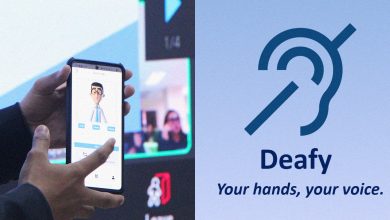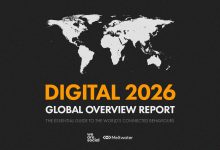The shift to mobile is no longer a change on the horizon. It’s here. In a Google Hangout with select media attendees, Jerry Dischler, Vice President of Product Management for AdWords, discussed how ads and analytics are more important than ever.
Every year, there are trillions of searches on Google.com and over half of those searches happen on mobile. And across the millions of websites using Google Analytics today, we’re seeing more than half of all web traffic now coming from smartphones and tablets.
When Google asked people to describe the role smartphones play in their lives, they used phrases like “attached to my hip”, “butler” and “lifeline.” They’re the companion they turn to in I-want-to-know, I-want-to-go, I-want-to-do and I want-to-buy moments throughout the day.
To help marketers succeed in this mobile-first world, Google has redesigned AdWords — from the ground-up — and re-thought everything from creatives and bidding, to workflow and measurement. The company is also making it easier for marketers to bridge the digital and physical worlds.
With location-related mobile searches growing 50% faster than all mobile searches, it’s clear that consumers are moving seamlessly between online and offline experiences. So it’s important to help marketers think this way too.
AdWords re-imagined for the mobile-first world
Over the last several years, we’ve discovered that accounting for mobile and designing for mobile-first are two very different things. That’s why Google has completely transformed how it thinks about and builds AdWords.
What do text ads look like in the mobile-first world? Mobile has revolutionized the canvas where ads live. Earlier this year, Google removed right-hand side ads on desktop to improve the search experience and make it more consistent across devices. This paved the way for the company to introduce the biggest changes to their text ads since AdWords launched fifteen years ago.
Optimized for screen sizes of the most popular smartphones, new expanded text ads in AdWords provide more ad space so you can showcase more information about your products and services before the click. Here are the key changes:
Upgraded ad components | Current | Available in July 2016 |
More prominent headlines | One 25-character headline | Two 30-character headlines |
Longer description line | Two 35-character description lines | One consolidated 80-character description line |
Relevant display URL | Manually entered display URL. Any mismatch between your display, final and landing page URLs will cause your ad to be disapproved. | Domain automatically extracted from your final URL to ensure accuracy. You can customize the URL path. |
These upgrades help your ads work harder across screens, especially for the on-the-go mobile consumer that wants to know exactly what you offer before tapping into your website.
Google expects to see increases in clickthrough rate of up to 20% compared to current text ads so they encourage you to start planning for this upgrade before it rolls out in July. Learn more with this best practices guide.
How do display ads look in a mobile-first world? From sites to apps to videos, mobile has unlocked a universe of new spaces to reach consumers. Yet marketers face challenges building ads that fit seamlessly across all device sizes and contexts. Responsive display ads adapt to the diverse content, shapes, and sizes across the more than two million publisher sites and apps on the Google Display Network (GDN). They also unlock new native inventory so you can engage consumers with ads that match the look and feel of the content they’re browsing.
The company is also extending the reach of GDN remarketing campaigns by giving you access to cross-exchange inventory. This inventory allows you to reach more websites and apps around the world.
What does bidding look like in a mobile-first world? Marketers need more control and flexibility to optimize bids on specific devices. In the next few months, you’ll be able to set individual bid adjustments for each device type — mobile, desktop and tablet. This lets you anchor your base keyword bid to the device most valuable to your business and then set bid adjustments for each of the other devices. You will also have a wider range to adjust bids up to +900%. With more controls, you can now optimize with greater precision while keeping things simple with a single campaign that reaches consumers across devices.
Mobile is local, bridging digital and physical worlds for marketers
Nearly one third of all mobile searches are related to location. People’s online and offline worlds are colliding — whether you’re researching restaurant ideas for dinner on Friday night or looking for a store that sells rain boots in your size.
To help advertisers reach consumers searching for physical business locations, Google is introducing new local search ads across Google.com and Google Maps. Advertisers using location extensions will be able to prominently showcase their business locations when consumers search for things like “shoe store” or “car repair near me.” Learn more
They’re also investing in more branded, customized experiences for businesses on Google Maps — geared towards helping you increase store visits. First, the company is experimenting with a variety of ad formats on Maps that make it easier for users to find businesses as they navigate the world around them. For example, Map users may start to see promoted pins for nearby coffee shops, gas stations or lunch spots along their driving route. Local business pages are also getting a brand new look — to encourage consumers to explore your store before they even arrive, Google is adding new features like special offers and the ability to browse product inventory.
With online ads bringing more people to your storefronts, how do you measure the impact?
AdWords is the largest online-to-offline ad measurement solution in the world. In fact, since AdWords store visits were introduced two years ago, advertisers have measured over 1 billion store visits globally. And when advertisers measure the impact of AdWords on offline traffic, they see on average a XX% incremental lift in store visits.
Businesses across a variety of industries around the world are using insights from AdWords store visits to measure the impact of online ads on offline activity. Nissan UK discovered that 6% of mobile ad clicks result in a trip to a dealership, delivering an estimated 25x return on investment.
Succeeding in a mobile-first world
As consumers live their lives online and blur the lines between online and offline, it’s more important than ever to build your business for mobile. Google’s building for this mobile-first world as well and the company is excited to go on this journey with you.
To see the full range of ads and analytics innovations announced this morning, watch the Google Performance Summit keynote here. Also check out the new AdWords Marketing Goals site to learn how to use ads solutions to meet your business objectives.
In photo is Jerry Dischler, Vice President of Product Management for AdWords







